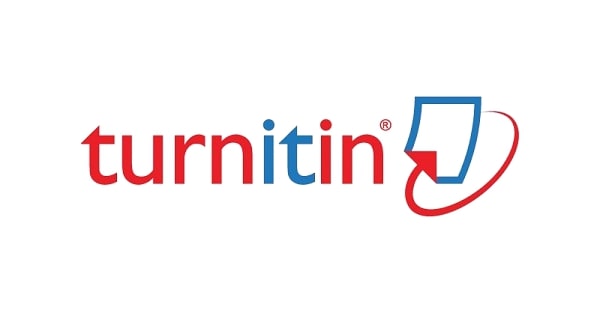The Influence of Financial Literacy, Use of Social Media, and Social Demographic Factors on Consumptive Behavior
DOI:
https://doi.org/10.55732/unu.gnk.2022.05.1.1Keywords:
Financial Literacy, Social Media Usage, Social Demographic Factors, Consumptive BehaviourAbstract
This research aims to determine (1) to analyze the level of financial literacy of adolescents in Jabodetabek, (2) to analyze the impact of the dimensions of financial literacy on consumptive behaviour, (3) to analyze the impact of social media usage on the consumptive behaviour,4) analyze the impact of socio-demographic factors the consumptive behaviours type of research is quantitative and qualitative, and the data source is primary data (questionnaire). The method used is descriptive analysis method and analysis of Structural Equation Modemodellingartial Least Square (SEM-PLS). The result is level of financial literacy of the late adolescent is well-literate, with a percentage of 44%. Financial knowledge and socio-demographic factors do not significantly affect delinquent adolescent consumptive behaviour. Financial attitudes, financial behaviour and social media usage significantly impact the late adolescent workforce in Jabodetabek.References
[APJJI] Asosiasi Penyelenggara Jasa Internet Indonesia. (2018). Profil Pengguna Internet Indonesia 2018. https://www.apjii.or.id/content/read/39/410/Hasil-Survei-Penetrasi-dan-Perilaku-Pengguna-Internet-Indonesia-2018
[BAPPENAS] Badan Perencanaan Pembangunan Nasional. (2014). Proyeksi Penduduk Indonesia 2010–2035. https://www.bappenas.go.id/files/5413/9148/4109/Proyeksi_ Penduduk_Indonesia _2010- 2035.pdf
[BPS] Badan Pusat Statistik. (2018). Sensus Penduduk 2018. https://www.bps.go.id/publication/2019/07/04/daac1ba18cae1e90706ee58a/ statistik-Indonesia-2019.html
[BPS] Badan Pusat Statistik. (2019). Statistik E-Commerce 2019. https://www.bps.go.id/publication/download.html
[BPS] Badan Pusat Statistik. (2020). Sensus Penduduk 2020. https://www.bps.go.id/sp2020/home/slide#slide=16
[OECD] Organisation for Economic Co-operation and Development. (2013). Financial Literacy and Inclusion: Results of OECD/INFE Survey Across Countries and by Gender. OECD.
[OECD] Organisation for Economic Co-operation and Development. (2017). G20/OECD INFE Report on Adult Financial Literacy in G20 Countries. OECD.
[OECD] Organisation for Economic Co-operation and Development. (2018). OECD/INFE Toolkit for Measuring Financial Literacy and Financial Inclusion. OECD.
[OJK] Otoritas Jasa Keuangan. (2013). Literasi Keuangan. OJK.
[OJK] Otoritas Jasa Keuangan. (2016). Strategi Nasional Literasi Keuangan Indonesia. OJK.
[OJK] Otoritas Jasa Keuangan. (2019). Survei Nasional Literasi dan Keuangan Inklusi Keuangan 2019. OJK.
Atkinson, A., & Messy, F. (2012). Measuring Financial Literacy: Results of the OECD / International Network on Financial Education (INFE) Pilot Study. Organization for Economic Cooperation and Development. 15.
Chita, R., Pali, C., & David, L. (2015). Hubungan antara Self-Control dengan Perilaku Konsumtif Online Shoping Produk Fashion pada Mahasiswa Fakultas Kedokteran Universitas SAM Ratulangi. Jurnal eBiomedik, 3(1), 297–302.
Dikria, O., & Mintarti, S. (2016). Pengaruh Literasi Keuangan dan Pengendalian Diri terhadap Perilaku Konsumtif Mahasiswa Jurusan Ekonomi Pembangunan Fakultas Ekonomi Universitas Negeri Malang Angkatan 2013. Jurnal Pendidikan Ekonomi, 9(2), 143 – 145.
Engel, J., Mark, K., Johns, Michael, & Burke, J. J. (1994). Perilaku Konsumen. Jilid 2 (6th ed). Jakarta: Binarupa Aksara.
Fuchs, C. (2014). Social Media a Critical Introduction. London: SAGE Publication, Ltd.
Ghozali, I. (2014). Structural Equation Modeling, Metode Alternative dengan Partial Least Square (PLS) (4th ed). Semarang: Badan Penerbit Universitas Diponegoro.
Grohmann, A., Klühs, T., & Menkhoff, L. (2018). Does Financial Literacy Improve Financial Inclusion: Cross country Evidence. World Development Journal, 111, 84–96.
Halim F et al. (2014). Profil Demografi dan Faktor – Faktor yang Mendorong Mahasiswa Universitas Kristen Petra Surabaya dalam Melakukan Kuliner Tengah Malam. Jurnal Hospitality Dan Manajemen Jasa, 2(1).
Herawati NT. (2017). Tingkat Literasi Keuangan Mahasiswa serta Faktor-Faktor yang mempengaruhinya. Seminar Nasional Riset Inovatif, 131–137.
Hidayatun. (2015). Pengaruh Intensitas Penggunaan Media Sosial dan Dukungan Teman Sebaya terhadap Perilaku Konsumtif pada Siswa Kelas XI SMA Muhammadiyah 3 Yogyakarta Tahun Ajaran 2014/2015. Jurnal Riset Mahasiswa Bimbingan dan Konseling, 4(10).
Hootsuite. (2020). Digital 2020: Essential Insights Into How People Around The World Use The Internet Mobile Devices, Social Media, and Ecommerce. Global Digital Overview, (1). https://wearesocial.com/digital-2020
Khoirunnas. (2017). Pola Konsumtif Mahasiswa di kota Pekanbaru. Jurnal Online Mahasiswa Fakultas Ilmu Sosial dan Ilmu Politik, 4(1), 1–15
Kotler, P., & Armstrong, G. (2001). Prinsip-Prinsip Pemasaran (8th ed). Jakarta: Erlangga.
Laughey D. (2017). Themes in Media Theory. Berkshire: Open University Press.
Lina, & Rosyid, H. (1997). Perilaku Konsumtif berdasar Locus of Control pada Remaja Putri. Psikologika, 4(1), 5 – 13.
Mayfield A. (2008). What is Social Media. iCrossing.
Mcquail D. (2003). Teori Komunikasi Massa. (Agus, D., Aminuddin, R., penerjemah). Jakarta: Erlangga.
Monks, F., Knoers, & Haditono, S. (2001). Psikologi Perkembangan: Pengantar alam Berbagai Bagiannya. Yogyakarta: Gajah Mada University Press.
Nasrullah, R. (2014). Teori dan Riset Media Siber (cybermedia). Jakarta: Kencana.
Nasrullah, R. (2015). Media Sosial (Perspektif Komunikasi, Budaya, dan Sosioteknologi). Bandung: Simbiosa Rekatama Media.
Pramudi, R. (2015). Pengaruh Gaya Hidup Konsumtif dan Kelompok Referensi terhadap Keputusan Pembelian Kosmetik Lokal. Journal of Reasearch in Economics and Management, 15(2), 280–301.
Prihastuty, DR Rahayuningsih, S. (2018). Pengaruh Financial Literacy, Financial Behavior, Financial Attitude, dan Demografi Terhadap Perilaku Konsumtif. Jurnal Hasil Penelitian LPPM, 3(2), 121 – 134.
Sangadji, & Sopiah. (2010). Metodelogi Penelitian–Pendekatan Praktis dalam Penelitian. Yogyakarta: Andi.
Sugiyono. (2014). Metode Penelitian Kombinasi (Mixed Methods) (5th ed). Bandung: Alfabeta.
Sumarwan, U. (2015). Perilaku Konsumen: Teori dan Penerapannya dalam Pemasaran. Bogor: PT. Ghalia Indonesia.
Downloads
Published
Issue
Section
License
Copyright (c) 2023 Bahruddin Syah Muwaffaq, Farida Ratna Dewi, Eka Dasra Viana, Rindang Matoati

This work is licensed under a Creative Commons Attribution 4.0 International License.
Authors who publish with this journal agree to the following terms:
Authors retain copyright and grant the journal right of first publication with the work simultaneously licensed under a Creative Commons Attribution License that allows others to share the work with an acknowledgement of the work's authorship and initial publication in this journal.
Authors are able to enter into separate, additional contractual arrangements for the non-exclusive distribution of the journal's published version of the work (e.g., post it to an institutional repository or publish it in a book), with an acknowledgement of its initial publication in this journal.
Authors are permitted and encouraged to post their work online (e.g., in institutional repositories or on their website) prior to and during the submission process, as it can lead to productive exchanges, as well as earlier and greater citation of published work (See the Effect of Open Access).















